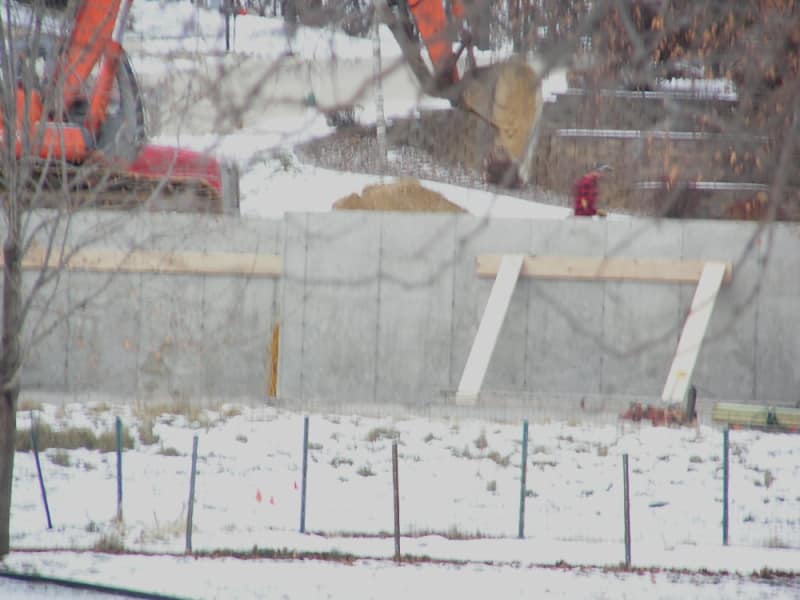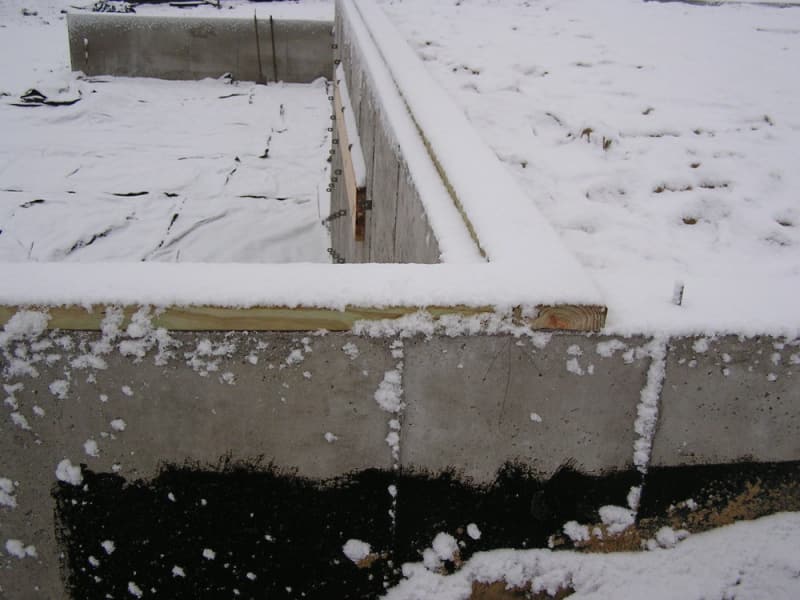Hammerslinger
Structural
- Nov 25, 2018
- 16
thread507-73922
I've been reading about block basement foundation failures and it seems the consensus is that concrete is better.
I have to disagree. Mostly the failure masonry occurs because of undersized block, lack of vertical and horizontal reinfocing along with improper backfilling.
I speak from experience having built masonry basements. Using 10 inch block with a #5 40ksi bar in a grouted core every 4-5 feet along with horizontal truss type galvanized steel every other course. I installed the vertical steel after the wall was built. Backfill with gravel up to the frost line. In Wisconsin that is usually 4 ft. below grade. Finish the backfill with soil, which acts as a frost insulator.
I remember building a home with my method of block wall construction while a neighboring builder was building with concrete. A few weeks after his house was framed and backfilled I went over and he showed me an ugly vertical crack from top to bottom in the concrete basement foundation.
I have to say I snickered. I could see that the span of that wall, even for reinforced concrete was too long.
As for my block foundations it's been 20 years for some and none have failed even with the heavy clay soil we have in Wisconsin.
I do see many foundation failures with block wall construction and it's usually due to no vertical reinforcement and improper backfilling.
My father-in-law had to have his block basement repaired with structural steel beams at the cost of $27,000. Before that one company installed the anchor system which failed. Most likely it failed due to soil and concrete slug shear.
My basement is built with 10 inch block. It is dry and there is not a crack in it.
Semi-retired builder--carpenter/mason
Structural engineering Tech.
Former building inspector
I've been reading about block basement foundation failures and it seems the consensus is that concrete is better.
I have to disagree. Mostly the failure masonry occurs because of undersized block, lack of vertical and horizontal reinfocing along with improper backfilling.
I speak from experience having built masonry basements. Using 10 inch block with a #5 40ksi bar in a grouted core every 4-5 feet along with horizontal truss type galvanized steel every other course. I installed the vertical steel after the wall was built. Backfill with gravel up to the frost line. In Wisconsin that is usually 4 ft. below grade. Finish the backfill with soil, which acts as a frost insulator.
I remember building a home with my method of block wall construction while a neighboring builder was building with concrete. A few weeks after his house was framed and backfilled I went over and he showed me an ugly vertical crack from top to bottom in the concrete basement foundation.
I have to say I snickered. I could see that the span of that wall, even for reinforced concrete was too long.
As for my block foundations it's been 20 years for some and none have failed even with the heavy clay soil we have in Wisconsin.
I do see many foundation failures with block wall construction and it's usually due to no vertical reinforcement and improper backfilling.
My father-in-law had to have his block basement repaired with structural steel beams at the cost of $27,000. Before that one company installed the anchor system which failed. Most likely it failed due to soil and concrete slug shear.
My basement is built with 10 inch block. It is dry and there is not a crack in it.
Semi-retired builder--carpenter/mason
Structural engineering Tech.
Former building inspector


